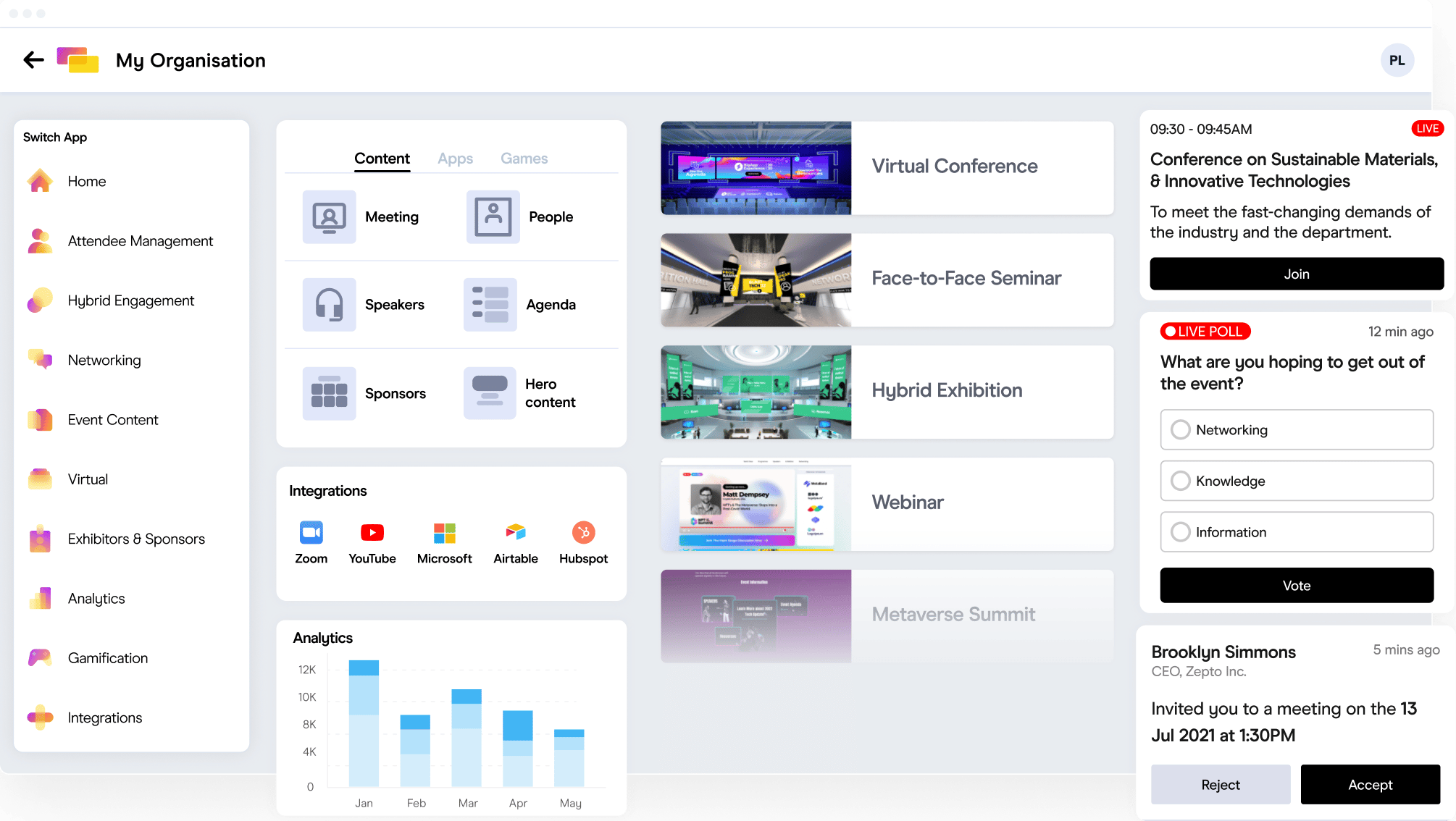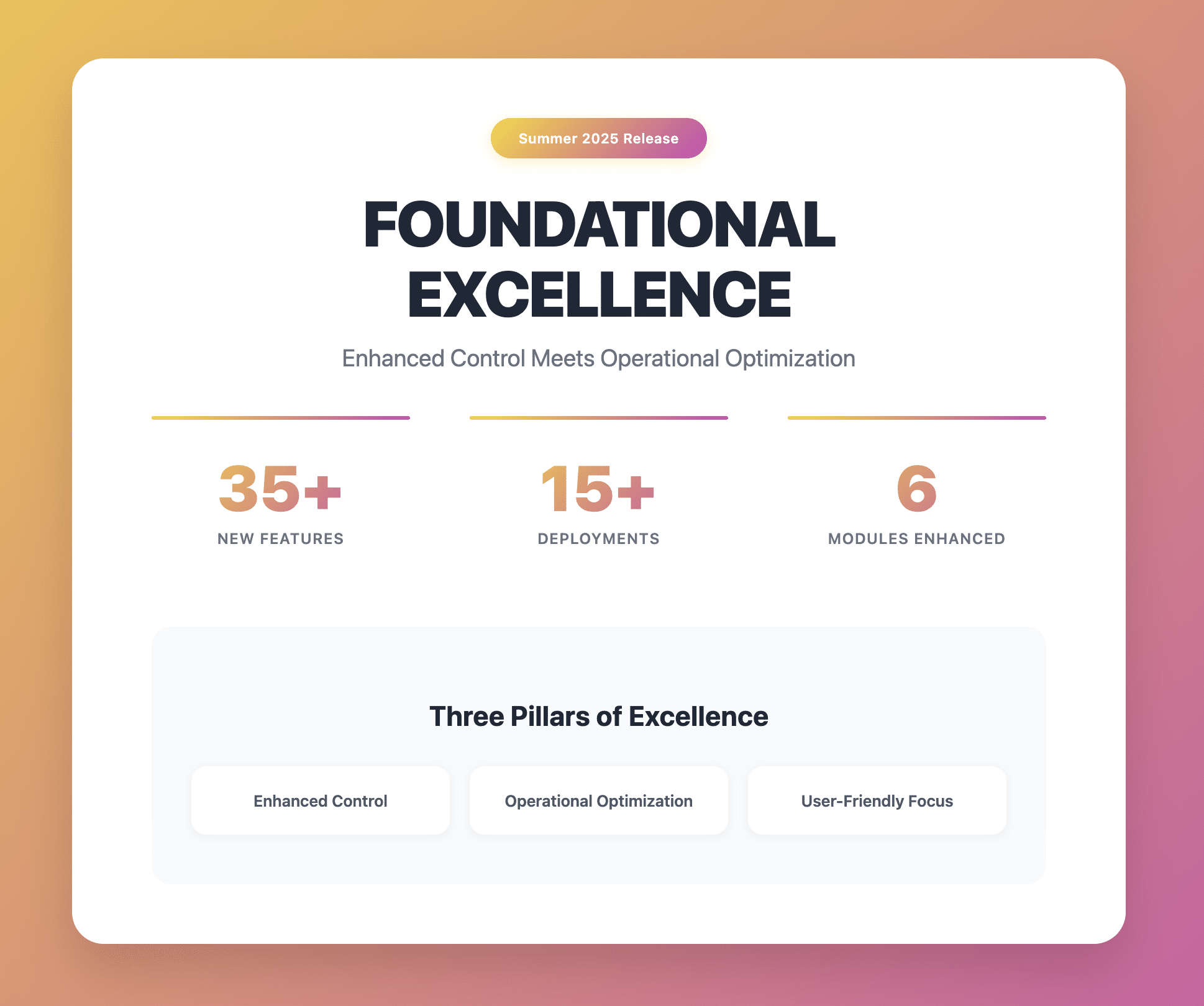Poor registration processes cost conferences countless potential attendees each year. The reality is simple: when people find it hard to register for your conference, many of them simply don’t. They abandon the process, and your conference loses valuable participants.
This problem stems from outdated online conference registration services that create unnecessary barriers. Many conference organizers still rely on basic forms that frustrate potential attendees with long load times, confusing layouts, and complicated payment processes.
The good news? Conference organizers who improve their registration systems consistently see significant increases in completed registrations. This isn’t just about having better technology – it’s about understanding what makes people click “register now” and actually finish the process.
This guide shows you practical steps to transform your registration rates. We’ll cover proven strategies that conference organizers use to boost sign-ups, based on real-world success patterns and industry best practices.
Understanding Registration Barriers
Before fixing your registration process, you need to know what’s stopping people from signing up. Let’s look at the common barriers that prevent potential attendees from completing their registrations.
Time-Consuming Forms
The biggest registration killer? Long forms. When potential attendees see a wall of required fields, many give up immediately. Online conference registration services often ask for unnecessary information upfront, creating needless friction in the sign-up process. The key is finding the balance between gathering essential information and keeping the process simple.
Payment Processing Problems
Payment issues regularly stop registrations in their tracks. Common problems include limited payment options, confusing price displays, and technical glitches during checkout. International attendees face extra challenges when registration systems don’t handle different currencies or preferred payment methods.
Mobile Registration Failures
Most people browse conferences on their phones, but many registration systems weren’t built for mobile use. Small buttons, hard-to-read text, and forms that don’t resize properly create major obstacles for mobile users. When mobile registration is difficult, you lose a significant portion of potential attendees who prefer to register on their phones.
Technical Roadblocks
Slow loading times discourage potential attendees quickly. Other technical issues like browser compatibility problems and session timeouts add to registration frustration. Every technical hiccup risks losing a registration that could have been completed smoothly with better systems.
Group Registration Complications
Many conferences attract group bookings from companies and organizations. But standard registration systems often can’t handle multiple registrations efficiently. This forces group coordinators to register each person separately or go through time-consuming manual processes, often leading to abandoned registrations.
Key Features of Successful Registration Systems
Modern online conference registration services need specific features to overcome common registration barriers. Success comes from understanding which elements truly matter and implementing them effectively.
Smart Form Design That Works
Registration forms need to balance gathering information with user convenience. Smart forms adapt to user inputs, showing only relevant fields based on previous answers. When someone selects a basic ticket, they won’t see questions about VIP preferences or special accommodations. This reduces form complexity while still collecting necessary information.
Registration forms should also remember partial entries. When attendees return to finish their registration, they shouldn’t have to start over. This feature alone can save many registrations that would otherwise be lost to frustration or time constraints.
Multi-Step Registration Process
Breaking registration into clear steps makes the process less overwhelming. A well-designed registration flow guides attendees naturally from basic contact information to ticket selection, and finally to payment details. This approach works better than showing everything on one page because it creates a sense of progress and achievement. Attendees can focus on one decision at a time, reducing errors and confusion. The step-by-step approach also adapts better to mobile screens, where space is limited.
Group Registration Capabilities
Strong group registration features save time for everyone involved. Group leaders should be able to manage multiple registrations through a single account, handling different ticket types and attendee information efficiently. The ability to edit attendee details after initial registration proves particularly valuable for corporate groups where participant lists often change. Payment handling for groups needs special attention too – the system should accommodate both individual and group payments while maintaining clear records.
Flexible Session Management
For conferences with multiple tracks or sessions, attendees need easy ways to select their preferences. A good system shows clear session overviews with timing information and handles capacity limits automatically. When popular sessions fill up, waitlist functionality keeps interested attendees engaged while giving organizers valuable data about demand. The ability to swap sessions after registration helps attendees adjust their schedules as needed, improving their overall conference experience.
Data-Driven Registration Strategies
Understanding how people interact with your registration process helps you make smart improvements. The right data leads to better decisions about how to structure your registration flow.
Registration Flow Analysis
Knowing where people spend time during registration reveals important patterns. Watch for spots where potential attendees pause or hesitate – these often indicate confusing instructions or unnecessary complexity. Pay attention to which payment methods people choose and which they avoid. Understanding these patterns helps you optimize the registration experience for your specific audience.
Abandoned Registration Recovery
When someone starts registration but doesn’t finish, you need a plan to bring them back. A good recovery strategy uses personalized reminder emails that show saved progress and offer a simple way to resume registration. Focus these messages on the unique value your conference offers rather than creating pressure to register. Remind people why they were interested initially, and make it easy for them to pick up where they left off.
Price Presentation Optimization
How you display prices significantly affects registration decisions. Early bird discounts need clear deadlines and visible savings amounts. Group rates should explain the benefits clearly, showing both individual and total costs. Package deals work best when you clearly outline everything included. The key is transparency – hidden fees or unclear pricing structures push people away from completing their registration.
Form Field Optimization
Every field in your registration form should serve a clear purpose. Regular analysis of your form helps identify questions that might be unnecessary or better asked after registration. Consider the flow of information – arrange fields in a logical order that matches how people think about event registration. Add clear, concise field descriptions only where they truly help explain what information you need and why.
Mobile Experience Enhancement
Mobile registration deserves special attention because phones handle forms differently than desktop computers. Buttons and links need to be large enough to tap easily. Forms should adapt smoothly when screens rotate between portrait and landscape modes. Navigation between steps should feel natural on a small screen. Payment options need to work seamlessly with mobile payment systems. Regular testing on various devices helps ensure a consistent experience for all attendees.
Automation and Workflow Optimization
The right online conference registration service can transform manual tasks into automated workflows. This shift not only saves time but also creates a more reliable registration experience for attendees.
Registration Workflow Automation
Manual registration management creates bottlenecks and increases error risks. Smart automation handles routine tasks like sending confirmation emails, updating attendee lists, and managing capacity limits. When someone registers for your conference, they should immediately receive their confirmation details without staff intervention. Meanwhile, your team gets notified about important registration milestones or when issues need attention.
Waitlist Management
Popular conferences often sell out quickly, making waitlist management crucial. An automated waitlist system should track interest levels and manage spot allocations fairly. When cancellations occur, the system can automatically offer spots to waitlisted attendees based on their position. This process needs to happen quickly – giving people limited time to claim their spot before moving to the next person in line.
Promotional Code Systems
Promotional codes do more than just offer discounts. A well-designed promo code system tracks marketing campaign effectiveness and partner performance. Custom codes for different marketing channels show which promotions drive the most registrations. Partner-specific codes help measure the success of co-marketing efforts. The system should automatically apply discounts and track usage patterns to prevent abuse.
Custom Notification Workflows
Different attendee types often need different information. VIP registrants might need details about exclusive sessions. Early bird registrants should get reminders about deadline-sensitive pricing. Speakers need different preparation instructions than regular attendees. Automated notification workflows ensure everyone gets the right information at the right time without overwhelming your team.
Registration Rules and Logic
Registration systems need built-in logic to handle complex scenarios. Maybe certain ticket types are only available to members. Some sessions might have prerequisites. Group discounts might apply only above certain numbers. Your online conference registration service should enforce these rules automatically while providing clear explanations to attendees when they don’t qualify for certain options.
Advanced Registration Techniques
Beyond basic automation, advanced techniques can significantly boost registration completions. These strategies focus on removing friction and adding value throughout the registration process.
Smart Form Pre-Population
Returning attendees shouldn’t have to enter their information again. Smart forms can securely store basic details and offer to pre-fill forms for registered users. This feature proves particularly valuable for annual conferences where many attendees return year after year. The system should still allow people to update their information easily while saving them from complete re-entry.
Multi-Language Support
Global conferences need registration systems that speak attendees’ languages. This goes beyond simple translation – date formats, currency displays, and form fields should adjust based on location preferences. A good system detects browser language settings and offers appropriate translations automatically while letting users switch languages easily if needed.
Custom Integration Capabilities
Registration data often needs to flow into other systems. Maybe your CRM needs updated attendee information. Your marketing automation platform might need registration status for email campaigns. Your finance system needs payment records. Custom integrations should handle these connections seamlessly, keeping all your systems in sync without manual data entry.
Registration Analytics
Understanding registration patterns helps optimize your approach. Look for trends in registration timing – do most people register right after announcements, or do they wait for early bird deadlines? Track which ticket types sell fastest and which need more promotion. Monitor group registration patterns to better serve corporate attendees. These insights guide everything from marketing timing to capacity planning.
Mobile Payment Optimization
Mobile payments need special attention because they often face unique challenges. Registration systems should support popular mobile payment methods while maintaining security. The checkout process needs to work smoothly on small screens, with clear error messages if something goes wrong. Payment forms should adjust automatically for mobile keyboards, making data entry easier.
Maximizing Registration Through Marketing
Even the best online conference registration services need strong marketing support to drive sign-ups. Smart marketing strategies work hand-in-hand with your registration system to boost completion rates.
Email Campaign Integration
Your online conference registration service and email marketing should work together seamlessly. When someone starts registration but doesn’t finish, automated emails can bring them back. These reminder emails work best when they reference specific actions – like which sessions the person viewed or which ticket type they considered. Timing matters too. Send reminders while interest is still fresh, but avoid overwhelming potential attendees with too many messages.
Social Proof Application
People trust other people’s experiences. Your registration process should showcase genuine attendee testimonials from past events. Instead of generic praise, use specific feedback about what attendees gained from your conference. Pictures from previous events help potential attendees visualize their participation. Showing current registration numbers or well-known companies that have already signed up can create positive pressure to register.
Remarketing Strategy
Many potential attendees need multiple touchpoints before registering. A smart remarketing strategy keeps your conference visible to people who’ve shown interest. Show them relevant content based on their previous interactions with your registration site. If they looked at group registration options, show them content about team benefits. If they viewed specific session details, remind them about those topics.
Partner Promotion Tracking
When partners help promote your conference, tracking their impact helps everyone. Partner-specific registration links show which promotional efforts drive the most sign-ups. This data helps you focus on your most effective partnerships. Tracking also ensures partners get proper credit for their referrals, strengthening these relationships for future events.
Streamlining Registration with Gevme
Modern registration challenges need modern solutions. Gevme’s online conference registration services brings together all the essential features we’ve discussed, making it easier to implement these strategies effectively.
Comprehensive Registration Tools
Gevme’s event registration software handles everything from basic registration to complex group bookings. The system adapts to your specific needs, whether you’re running a small corporate workshop or a major international conference. Multi-step registration forms, smart field logic, and flexible payment options come built into the platform.
Automation That Works
The platform automates crucial registration tasks without losing the personal touch. Customizable confirmation emails, waitlist management, and promotional code systems work together smoothly. The system handles routine tasks automatically while giving you full control over important decisions.
Data Management Made Simple
Managing registration data becomes straightforward with Gevme’s centralized system. Generate registration reports, track attendance patterns, and monitor registration progress in real time. The platform stores all your data securely while making it easily accessible when you need it.
Starting with Gevme means you don’t have to build your online conference registration service from scratch. The platform offers professional templates designed for different event types. You can customize these templates to match your brand while maintaining proven conversion-optimized layouts.
Taking Action
Improving your conference registration process doesn’t have to be overwhelming. Start by reviewing your current registration workflow against the strategies we’ve covered. Look for quick wins – areas where small changes could lead to immediate improvements in your registration rates.
Focus first on removing obvious barriers to registration. Make sure your forms work well on mobile devices. Test your registration process from start to finish. Set up proper tracking to measure the impact of your changes.
Ready to transform your conference registration process? Visit Gevme to see how our registration platform can help you implement these strategies easily. Start your free demo today and see the difference a purpose-built solution can make for your conference success.
FAQ’s
Many potential attendees abandon registration due to long forms, poor mobile experience, confusing payment options, and technical issues. Simplifying the process reduces drop-offs significantly.
Use a smart, multi-step form that shows only relevant fields. Keep it short, allow users to save progress, and ensure the design works seamlessly on mobile devices.
Look for smart form logic, group registration capabilities, mobile optimization, automated workflows (like confirmations and waitlists), and real-time analytics.
Use automated email reminders that include saved progress and highlight the benefits of attending. Personalize them based on sessions or tickets they viewed.
Gevme offers a complete registration solution with smart forms, automation, analytics, and mobile optimization—helping organizers streamline the process and boost conversions.








